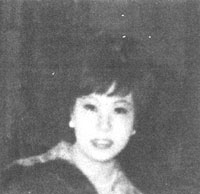|
throes of
mental illness have no link with
the truth, and thus become no more than walking corpses.
This
greatly shocked her. It is sometimes under extreme pressure and hardship that
people are moved to bring forth the Bodhi heart. Suddenly the world collapsed,
the ground shifted, and Kuo Hsi had to face up to a reality, which she had so
far swept under the rug.
Inside
of a month she pulled herself together enough to resume her life, but with a new
sense of the emptiness of mundane existence. She could now give up things, which
she hadn't been able to give up before. She had already dreamt that her head was
shaved and had at the time firmly discounted it as a whimsical fantasy. Now she
followed her destiny.
Kuo
Hsi came to America to join the Avatamsaka Assembly at Gold Mountain Monastery
in 1977. After a short time she left the home-life on Kuan Yin Bodhisattva's
birthday, June 19, 1977.
At
present she cultivates and is resolved to get rid of her afflictions.
FALL
PUBLICATIONS FROM BTTS:
The Sixth
Patriarch’s Sutra, a new edition in paperback of this classic Ch'an text. The
Venerable Master Hua's interlinear commentary holds treasures of the oral
tradition, encouragements, admonishments, exhortations, humorous anecdotes,
profound principles, and methods for cultivation. This coupled with the Sixth
Patriarch's revelations of the self-nature wisdom inherent in us all makes this
text unforgettable. Available in late October $12.50 from the Buddhist Text
Translation Society.
The Sutra in
Forty-two Sections, is a series of straightforward instructions spoken by the
Buddha to his left-home disciples. The principles expounded are invaluable to
all cultivators, and the Venerable Master Hua's concise commentary reaffirms the
importance of precepts, samadhi, and wisdom in cultivation of the Way. Available
In mid-October. $4.00 from the Buddhist Text Translation Society.
Three Steps,
One. Bow, is a book containing the daily records of two bhikshus who made the
first Buddhist pilgrimage in American which used the method of bowing once every
three steps. Their eleven hundred-mile journey was a unique experience; and
their records relate the perils, hardships, patience, vigor, rewards, and
insights that occurred. Available in mid-October from BTTS.
|
